I like thin-bladed knives and think batoning firewood is highly overrated and unnecessary.
So, I was pleased when Mike Stewart, president of Bark River Knives, and a knife industry legend, explained why today’s knife blades had to be made thicker. Here are his Facebook comments, used with his permission.
Edited by Leon Pantenburg
Disclaimer: I don’t work for Bark River Knives. Nobody had any input into this post – it is strictly my opinion.
Question from Jim Hill: Mike Stewart. You posted a wonderful group of antique Bowie knives a couple of days ago. You noted that they were light and fast, not for chopping wood. In this age of YouTube knife test videos, and the incessant need for any “decent” knife to be able to handle batoning through a sequoia, has this had a detrimental affect on the type of knives BRK produces? Have you had to make them beefier than you would personally choose just to keep your customers happy?
Answer from Mike Stewart:
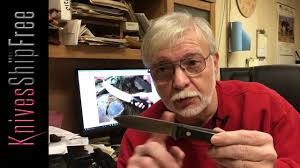
Mike Stewart, of Bark River Knives, has been making knives for decades. Based in Escanoba, Michigan, BRK produces tens of thousands of knives annually.
This is a very good question and I think you already know the answer.
In the industry today we are forced to overbuild a lot of knives because of this crazy batoning phenomenon. It is a thing that did not ever exist beyond some small kindling from the beginning of time until very very recently. Nobody batoned Stumps or anything much thicker than your wrist with knives.
Folks need to find old outdoor and woods books and they will see – No Such Thing. The popularity of You Tube created this trend. Reviewers needed something to do to get attention and whoever the first guy was that did this started all of them doing it. Lots of people today actually think it is normal to crossgrain baton stuff – it was not until the last 25 years or so. Most skilled outdoorsmen knew how to baton in an emergency but never actually did it because their skill prevented them from being in an unprepared emergency. Same with prying things with knives. It is a No-No. All the time.
This nonsense has forced most of us as makers to make things like Bowie knives that are totally 500% inaccurate from a historical perspective. Bowie knives were invented in the late 1820s. NONE of them were over 3/16ths-inch thick and most were closer to 1/8th-inch thick. Nobody thought they were a camp knife or a wood processing knife.
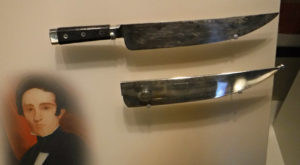
This 1830 original Bowie knife is in the Museum of Mississippi History. It has a thin blade.
They were a weapon – period. Look at the last issued Bowie knives. When did that happen ? It was in 1944. Case – Kinfolks – Collins and Western made real honest to Pete Bowie knives for the Pacific Campaign in World War Two. (Editor’s note: These Bowies were issued primarily to American troops fighting the the jungles, such as the Marine Raiders.)
How thick were the blades on these Bowies? One-eighth inch thick. They even called them “Jungle Bowie Machetes.”
Why ? They were for light work and a weapon for close quarter offense and defense, which was not that unusual in that part of the war effort.
These Bowies had a one-eighth inch thick, nine-inch blade. Quick Blades – not for batoning wood.
(Check out this post about how to chose the best best blade thickness.)
Here is the answer I get on “Why in the hell would you baton that log?”
“It is fun and I enjoy it.” Kind of leaves us (knife makers) having to toe the line and make these overbuilt knives to be improperly used.
Let’s look further back in history – to times when the knife was the only tool that most people in early cultures used – what do we see ?
We see seven to nine inch blades (Sometimes a little longer) that are thin – usually 1/8th to 3/16ths inches thick. They vary in regional shapes but they are light – fast and very efficient. They were used for making shelters, cutting kindling for fires, household chores and camp chores and even used to break down game to carry back to the village. They are all thin blades.
Why are the big knives (called machetes) that are almost unique from Southern North America all through Central America to the tip of South America ALL thin ?
It is because the thin blades work and work better for real time tasks than the thicker, slower and heavier knives. I have never seen a picture or a film or a video of any indigenous people from these regions batoning anything. They also know the difference between softwoods and hardwoods. When they encounter hardwoods, they go and get an ax or now – a chainsaw.
People that actually know how to use large knives do not go smashing them around at trees or logs – it is just not done by skilled people.
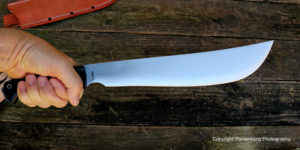
This Bark River Machete works very well for its intended purpose.
Now, how does this effect me and you and other knife makers ? We are trying to make a living, and a living for our employees and dealers in the knife business. We are really forced to give people what they want.
Here is where we are a bit different here in the Bark River (Facebook) group. Many of you have developed skills over the years and we are seeing more and more of you ask how THIN the blade is – not how THICK the blade is. I am very encouraged by this and if you all note – we have been offering more and more thinner blades with really good cutting geometry. I find this exciting and I love that so many of you are really catching on with “How To Use a Knife”.
Will we still make these overbuilt Bowies and stuff? Yes, we will. We have to, and really want to, because so many people want them. But – please note that more and more models now have an LT version.
Please click here to check out and subscribe to the SurvivalCommonSense.com YouTube channel – thanks!

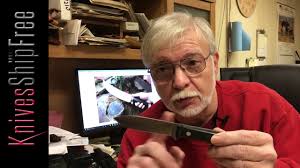

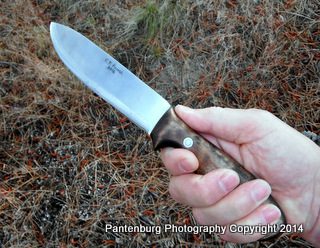
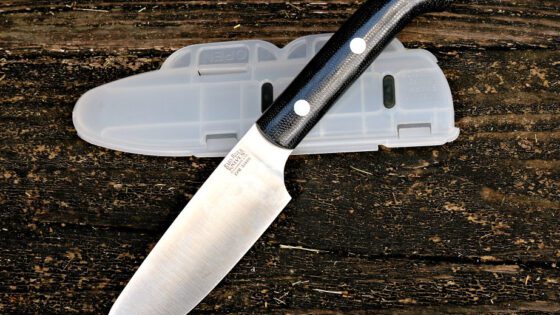

Leave a Reply